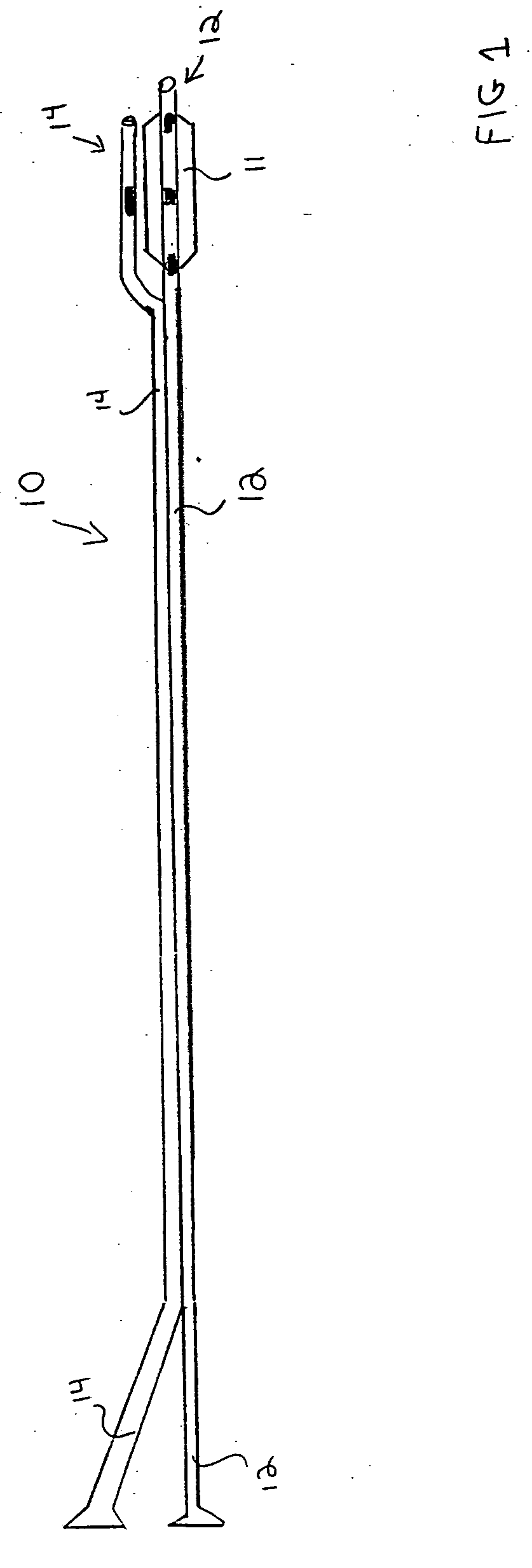Catheter with attached flexible side sheath
a flexible side sheath and catheter technology, applied in the field of catheter systems, can solve the problems of limiting the ability to insert a branch stent into the side, compromising the patency of the main vessel and/or its branches, and generally produced in a straight tubular configuration
- Summary
- Abstract
- Description
- Claims
- Application Information
AI Technical Summary
Benefits of technology
Problems solved by technology
Method used
Image
Examples
Embodiment Construction
[0034] The present invention comprises methods of positioning a main stent at a vessel bifurcation such that a side opening in the main stent is positioned at the ostium of a branch vessel, and sets forth various apparati and kits for performing the preferred methods.
[0035] In addition, the present invention comprises methods for positioning a main and a branch stent at a vessel bifurcation, wherein the branch stent is deployed through a side opening in the main stent, with the side opening in the main stent being positioned in registry with the ostium of the branch vessel.
[0036] A novel stent delivery system is provided for accomplishing the preferred methods. Referring to FIGS. 1 to 2B, the present stent delivery system 10 comprises a first catheter 12 having an attached flexible side sheath 14. An inflatable balloon 11 is preferably positioned at the distal end of first catheter 12. As is shown in FIGS. 5 to 6B, first catheter 12 is receivable over a first guidewire 21 and flex...
PUM
 Login to View More
Login to View More Abstract
Description
Claims
Application Information
 Login to View More
Login to View More - R&D
- Intellectual Property
- Life Sciences
- Materials
- Tech Scout
- Unparalleled Data Quality
- Higher Quality Content
- 60% Fewer Hallucinations
Browse by: Latest US Patents, China's latest patents, Technical Efficacy Thesaurus, Application Domain, Technology Topic, Popular Technical Reports.
© 2025 PatSnap. All rights reserved.Legal|Privacy policy|Modern Slavery Act Transparency Statement|Sitemap|About US| Contact US: help@patsnap.com



